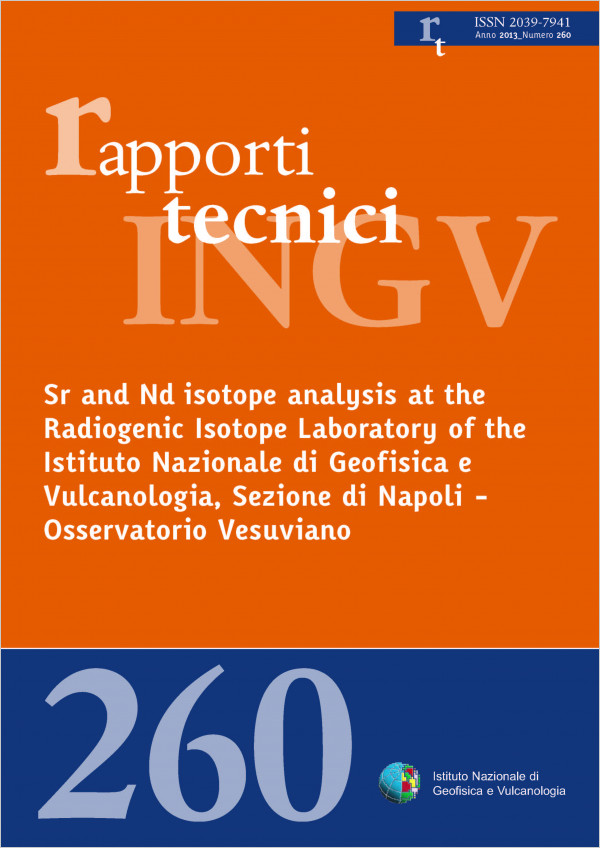Sr and Nd isotope analysis at the Radiogenic Isotope Laboratory of the Istituto Nazionale di Geofisica e Vulcanologia, Sezione di Napoli - Osservatorio Vesuviano
Main Article Content
Abstract
Evolution of magmatic systems can be studied by using geochemical and isotopic data. Magmas generated in the mantle, during uprising, can change their characteristics undergoing a variety of chemical evolution processes. The coupling between the study of major and trace element, and radiogenic isotope compositions, may be useful to distinguish the effects of different processes of magma differentiation. The implementation of modern mass spectrometers since the first one designed by Nier [1940] made possible the measurement of variations in the isotopic composition of selected elements in natural materials and thus permitted the spectacular growth of Isotope Geology. Last generation mass spectrometers gave a new impulse to isotopic researches in the Earth Sciences, providing the possibility to strongly reduce the analytical time concomitantly increasing accuracy and precision. A new generation Thermal Ionisation Mass Spectrometer (ThermoFinnigan Triton TI® Mass Spectrometer) and a clean laboratory have been set up at Istituto Nazionale di Geofisica e Vulcanologia (INGV), Sezione di Napoli-Osservatorio Vesuviano (OV), since year 2000, using procedures already adopted at the University of Napoli Federico II, as well as standards solutions, in order to measure Sr and Nd isotope compositions of volcanic products for scientific purposes. Particular attention has been dedicated to the procedures set up for extracting Sr and Nd from natural samples (whole rocks, minerals and groundmass) and for measuring Sr and Nd isotope compositions of natural and reference samples. Here we report a data set on certified international standards used to evaluate the quality of data produced in the INGVOV Radiogenic Isotope Laboratory: NIST SRM 987 for Sr isotopes and La Jolla for Nd isotopes. The chemical procedures adopted for extracting Sr and Nd from natural samples and the analytical methods for measuring their isotope composition allowed us to develop and perform high precision analysis of small-size samples, such as single crystals, and to detect intra-grain variations (core, rim, growth zones) by using innovative micro-sampling methodologies, such as micro-milling.
Article Details
Section
Article

This work is licensed under a Creative Commons Attribution 4.0 International License.

